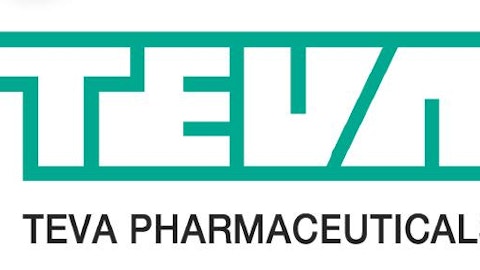— Sun Tzu, The Art of War
Well, with Pentagon Sequester now in full swing, defense execs are starting to feel “vulnerable.” For most of July, and on into August, we’ve seen below-average issuances of new contracts to the nation’s leading defense contractors. Last week, only $1.5 billion in contracts went out — about 76% below the level you’d ordinarily expect in this budget year. Clearly, money is getting tight.
Yet long-term investors know there are ways to grow profits even in a shrinking market. Because even in a shrinking market, you can still shore up your share of the market … and sometimes even take market share from others.
And that’s what Lockheed Martin Corporation (NYSE:LMT) intends to do.
A few years ago, Lockheed Martin Corporation (NYSE:LMT) locked up the market for military warplanes, winning the contract to build F-35 fighter jets for the U.S. Air Force, Navy, and Marine Corps — a $1 trillion dollar opportunity, and maybe more. According to some experts, this might be the last manned fighter jet the U.S. ever builds. And yet, although Lockheed Martin Corporation (NYSE:LMT) appears to have cornered this market, its ambition doesn’t stop here.
Last week, in a development that got little attention from the mainstream media, Lockheed Martin Corporation (NYSE:LMT) announced a new initiative to help do for helicopters what it did with the F-35 for fighter jets — to “offer a universal, highly adaptable and affordable mission equipment package (MEP) to meet requirements for the Joint Multi-Role/Future Vertical Lift (JMR/FVL) rotary wing program.” With the U.S. Army expected to buy some 4,000 such next-gen helicopters eventually, this is already a pretty big deal. But it could be even bigger than it sounds.
According to Lockheed Martin Corporation (NYSE:LMT), MEP will be “a highly adaptable package” including “advanced avionics, sensors and weapons … that can be applied across multiple platforms.” To me, this sounds like Lockheed is trying to develop a package that can be installed on multiple helicopter systems — to the exclusion of competing defense contractors’ systems.
As Lockheed tells it, of course, its primary aim is to make military helicopters more “affordable” for its customers. But a side benefit for Lockheed — completely unintentional, I’m sure — is that a customer that chooses to install its MEP package of “avionics, sensors, and weapons” would most likely be unable to swap out one part of the integrated package for an offering from a rival contractor.
What it means to you
So what does this mean in practice? To start with an easy example, Lockheed has been putting TADS/PNVS electro-optical fire control systems in The Boeing Company (NYSE:BA) Apache helicopters since 1983. Every time a helicopter contract comes up for bid, though, Lockheed Martin Corporation (NYSE:LMT) has to fight for the right to make sure TADS/PNVS gets installed in it rather than, say, Raytheon Company (NYSE:RTN)‘s Multi-Spectral Targeting System, a standard on Sikorsky Seahawks.





